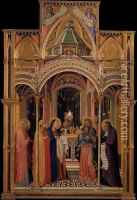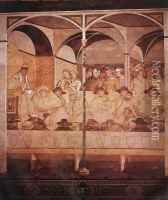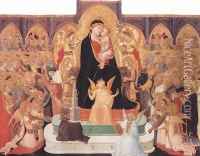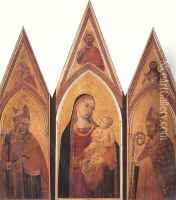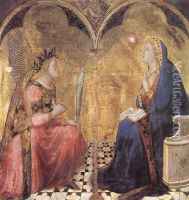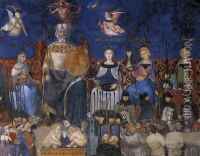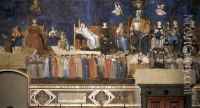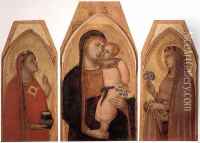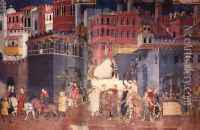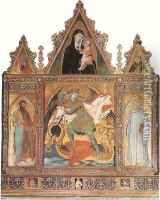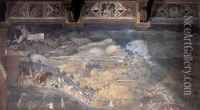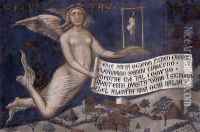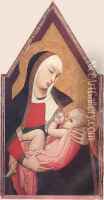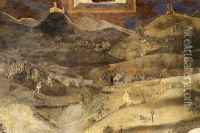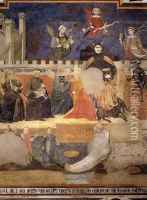Ambrogio Lorenzetti Paintings
Ambrogio Lorenzetti was an Italian painter of the Sienese school during the Italian Renaissance. He was born in Siena, Italy, around 1290, and had a brother named Pietro Lorenzetti, who was also a renowned painter. Ambrogio is best known for his secular series of frescoes in the Palazzo Pubblico (Town Hall) of Siena, called 'Allegory of Good and Bad Government'. These works are celebrated for their detailed representation of urban and rural life and their pioneering use of perspective and allegory to convey political messages.
Ambrogio's early works were heavily influenced by his brother Pietro and another Sienese painter, Duccio di Buoninsegna. This influence is evident in his attention to detail and his use of delicate colors. However, Ambrogio developed a distinctive style characterized by an innovative approach to spatial representation and narrative.
One of Ambrogio Lorenzetti's most significant contributions to art was his exploration of the effects of good and bad governance on society, depicted in his frescoes at Siena's Palazzo Pubblico. This work was commissioned by the ruling council of the Republic of Siena and was completed between 1338 and 1340. The 'Allegory of Good Government' represents a peaceful, prosperous city and countryside under wise leadership. In contrast, the 'Allegory of Bad Government' depicts a tyrant and a city in decay, suffering from the effects of corrupt rule.
Apart from his political allegories, Ambrogio also worked on religious subjects. His frescoes in the Basilica of San Francesco in Siena and his panel paintings of religious narratives showcase his skill in creating emotional, expressive figures and bringing biblical stories to life.
Ambrogio Lorenzetti's career was abruptly ended by the Black Death, which swept through Europe and claimed his life in 1348 or possibly in 1350, as historical records are not entirely clear on the exact year of his death. His body of work had a lasting impact on the development of European art, influencing the representation of space and the incorporation of secular themes in painting. Lorenzetti's legacy lives on through his contributions to the Sienese school and his innovative approach to visual storytelling.
